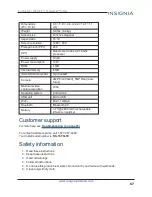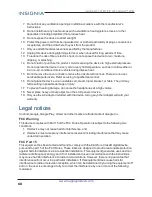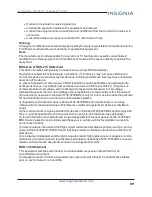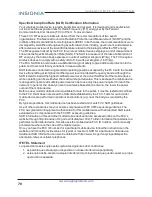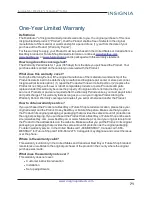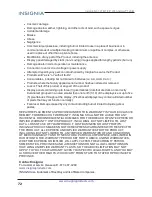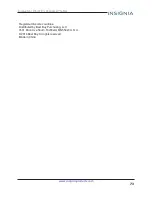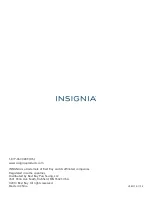
Specific Absorption Rate (SAR) Certification Information
Your wireless mobile device is a radio transmitter and receiver. It is designed and manufactured
not to exceed the exposure limits for Radio Frequency (RF) energy set by the Federal
Communications Commission (FCC) of the U. S. Government.
These FCC RF exposure limits are derived from the recommendations of two expert
organizations: The National Council on Radiation Protection and Measurement (NCRP) and the
Institute of Electrical and Electronics Engineers (IEEE). In both cases, the recommendations were
developed by scientific and engineering experts drawn from industry, government, and academia
after extensive reviews of the scientific literature related to the biological effects of RF energy.
The RF exposure limit set by the FCC for wireless mobile devices employs a unit of measurement
known as the Specific Absorption Rate (SAR). The SAR is a measure of the rate of absorption of
RF energy by the human body expressed in units of watts per kilogram (W/kg). The FCC requires
wireless devices to comply with a safety limit of 1.6 watts per kilogram (1.6 W/kg).
The FCC SAR limit incorporates a substantial margin of safety to give additional protection to the
public and to account for any variations in measurements.
SAR tests are conducted using standard operating positions accepted by the FCC with the mobile
device transmitting at its highest certified power level in all tested frequency bands. Although the
SAR is determined at the highest certified power level, the actual SAR level of the mobile device
while operating can be well below the maximum reported value. This is because the mobile device
is designed to operate at multiple power levels so as to use only the power required to reach the
network. In general, the closer you are to a wireless base station antenna, the lower the power
output of the mobile device.
Before a new model mobile device is available for sale to the public, it must be tested and certified
to the FCC that it does not exceed the SAR limit established by the FCC. Tests for each model
mobile device are performed in positions and locations (e.g. near the body) as required by the
FCC.
By typical operations, this mobile device has been tested and meets FCC SAR guidelines.
Use of other accessories may not ensure compliance with FCC RF exposure guidelines. The
FCC has granted an Equipment Authorization for this mobile device with all reported SAR levels
evaluated as in compliance with the FCC RF exposure guidelines.
SAR information on this and other model mobile devices can be accessed online on the FCC’s
website through http://transition.fcc.gov/oet/rfsafety/sar.html. To find information that pertains to a
particular model mobile device, this site uses the mobile device FCC ID number, which is usually
printed somewhere on the case of the mobile device.
Once you have the FCC ID number for a particular mobile device, follow the instructions on the
website and it should provide values for typical or maximum SAR for a particular mobile device.
Additional SAR information can also be obtained at http://www.fcc.gov/encyclopedia/specific-
absorption-rate-sar-cellular-telephones.
IFETEL Statement
La operación de este equipo está sujeta a las siguientes dos condiciones:
1. es posible que este equipo o dispositivo no cause interferencia perjudicial y
2. este equipo debe aceptar cualquier interferencia, incluyendo la que pueda causar su propia
operación no deseada.
70
Insignia NS-15T8LTE 8" LTE Android™ Tablet












